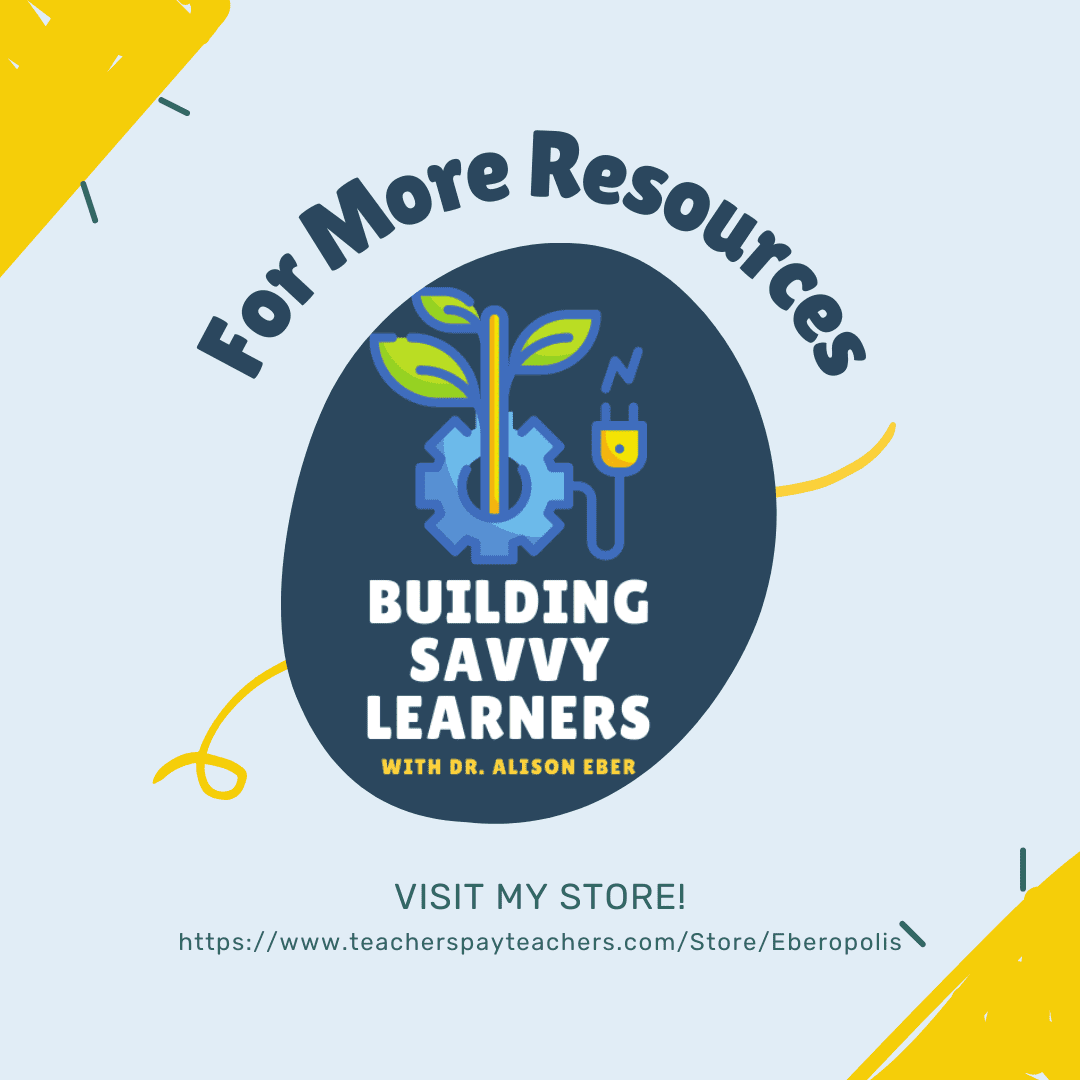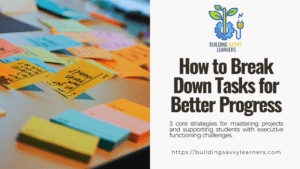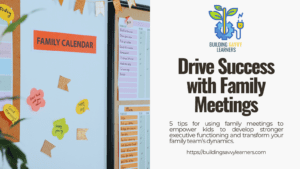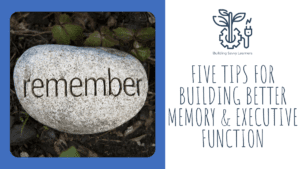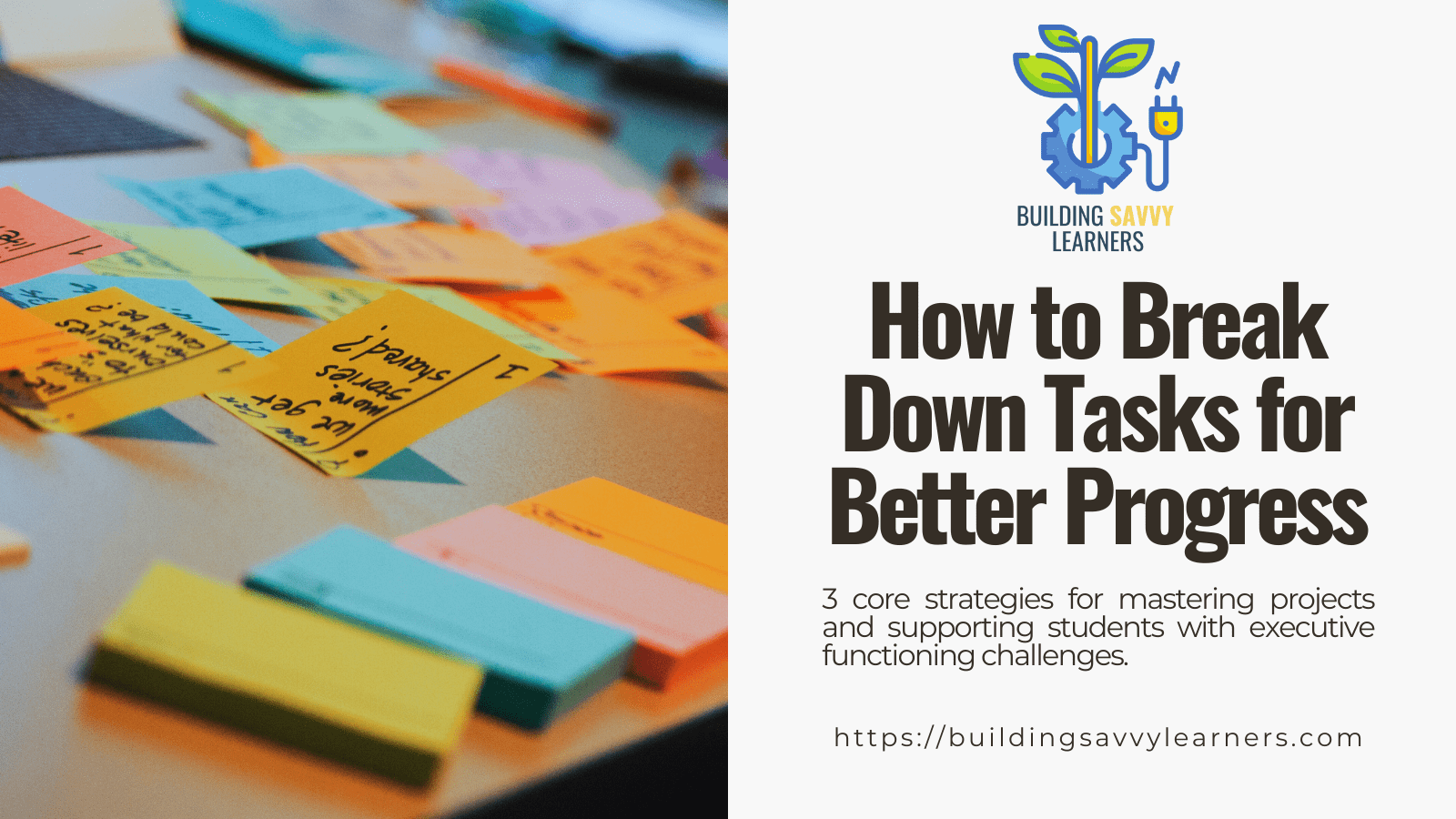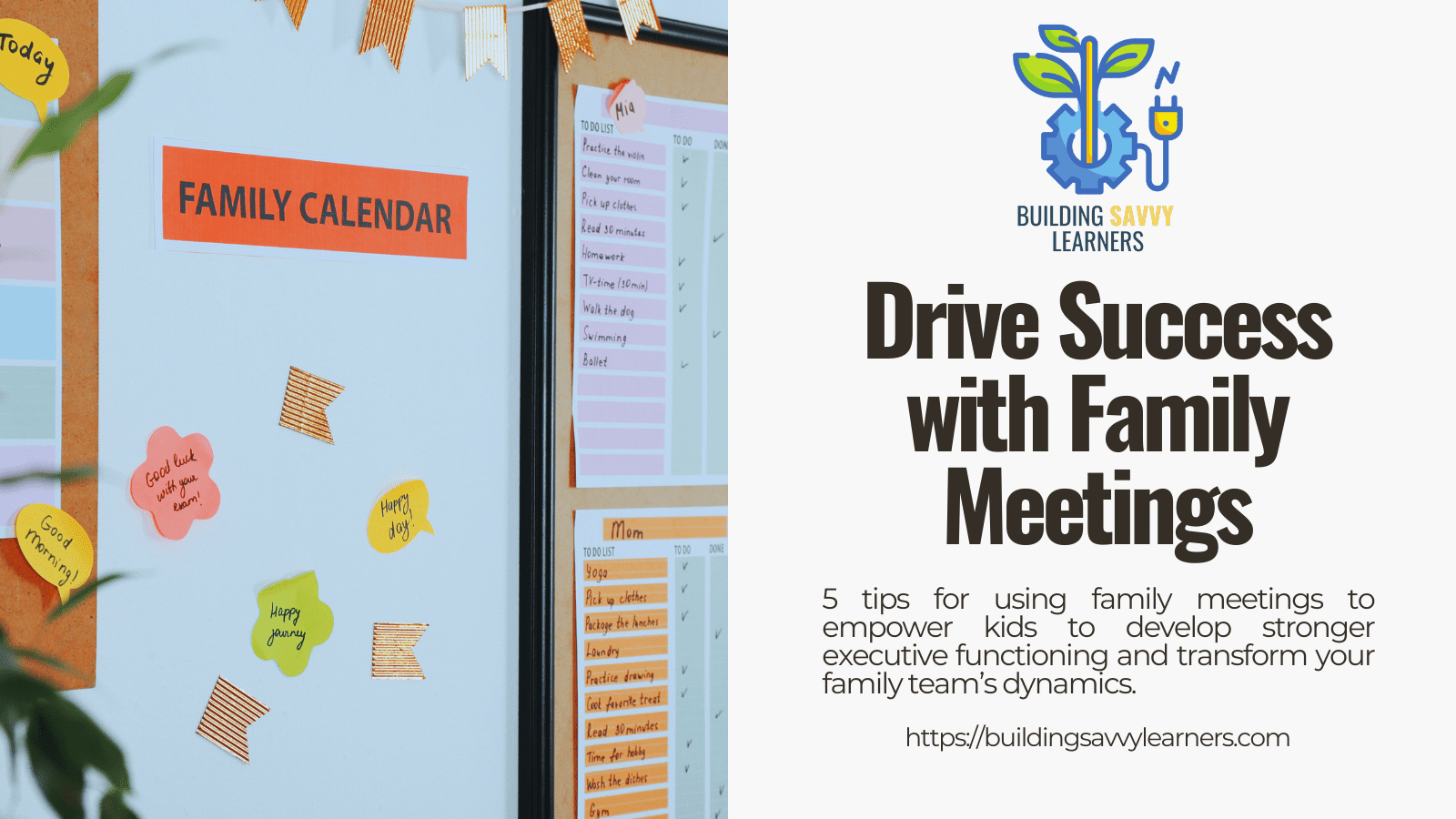(This is the second part of a two part series. Click here to read about the research in Part 1.)
Functional MRIs and other innovations are helping us understand much more about how brains learn and process math. Given how many of us parents (and teachers) grew up hating math, these developments are welcome. While some of the math strategies used in classrooms today may seem unfamiliar, there are lots of ways parents can help.
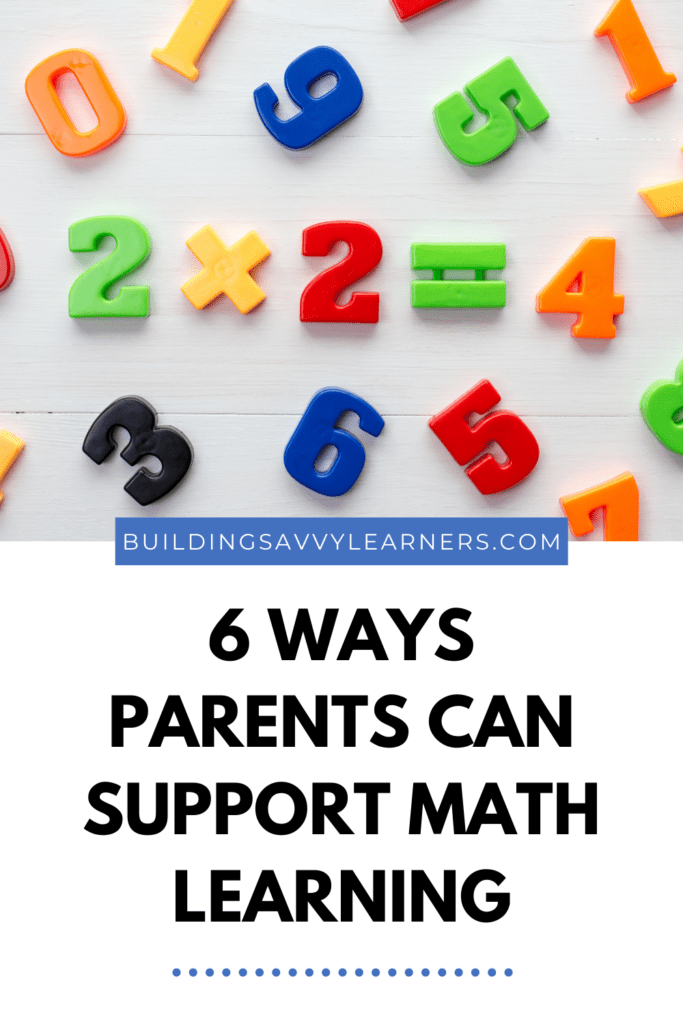
6 Ways Parents Can Support Math
(Note: This post contains affiliate links. As an Amazon associate, I earn from qualifying purchases. That means if you click on a link and make a purchase, I will get a small commission at no additional cost to you. To learn more about why I use affiliate links, you can read my disclosure policy.)
1. Be Open to Learning from Your Child
When kids are asked to explain their work, they are forced to think more deeply about their work and how they can present it in a way that makes sense to others. A simple conversation like, “Wow! That looks like an interesting way to solve that problem. I never learned how to do it that way. Could you show me?” will empower your child to think about the problem. You can then ask follow up questions about parts that are unclear or stretch their thinking with questions like “How else could you have solved that problem?” or “Would a strategy like this work? Why or why not?” The important thing is that there isn’t a single right way to solve. We want to catch errors, sure, but if a child is using an innovative strategy to get to the right answer, we shouldn’t discourage that.
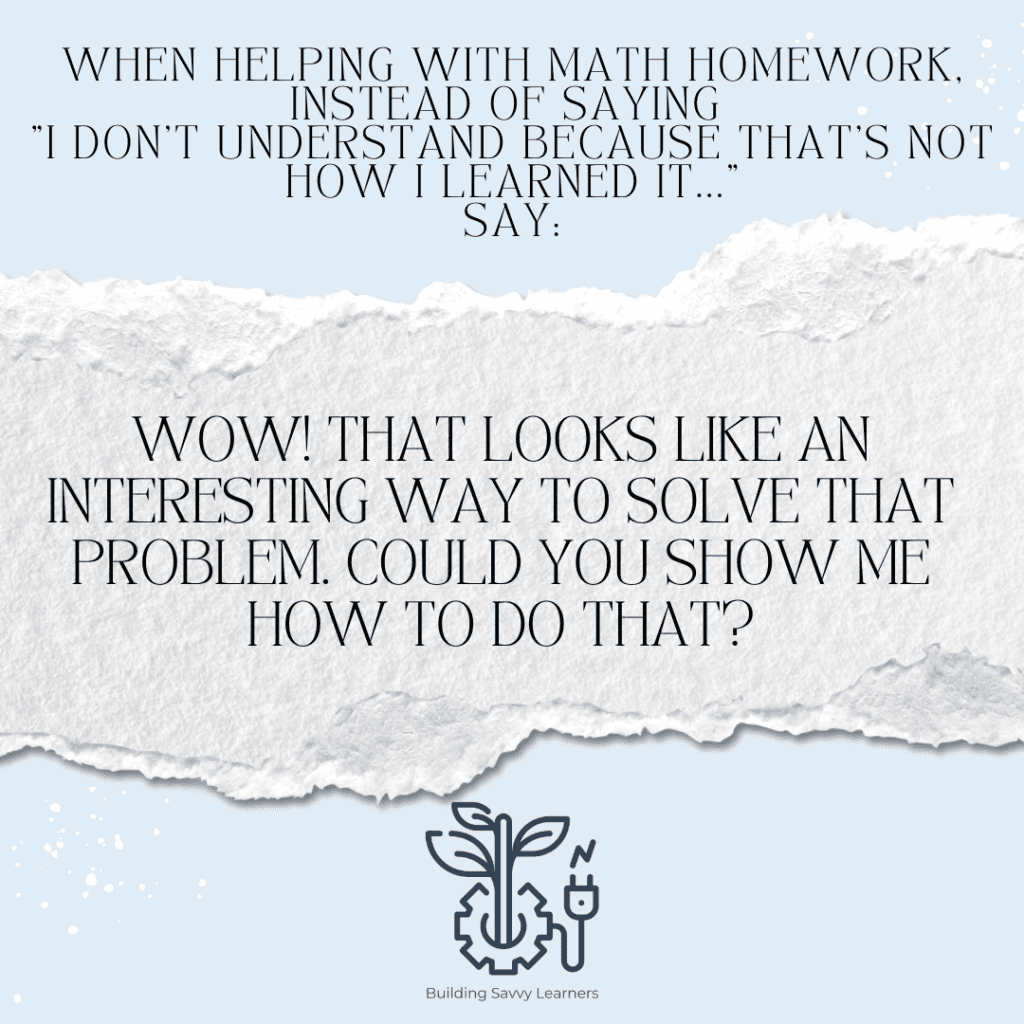
2. Highlight Real World Connections and Problem Solving
Outside of math class or standardized tests, I’ve never been given a page of math problems to solve. But we use math all the time. ALL. THE. TIME. Cooking, shopping, budgeting, scheduling. We take for granted how much math is just a natural part of our day.
Build in conversations around naturally occurring math. This will help kids see the practical sides of math.
When Cooking
Practice converting measurements like how many quarter cups would you need if the recipe calls for 2 cups? Could you use 1/3 cup measures? Compare the relative sizes of measurements. Estimate the size pans you’d need for varying ingredient combinations. Double recipes or halve them. Many kids enjoy being a part of this process, and it’s a good way to develop mathematical knowledge.
When Shopping
Have kids estimate the overall costs of the items. We sometimes play over/under at the store where one person says how much they think the checkout will be, and the other person decides if that estimate is too high or too low. We celebrate estimates that are super close, and it helps kids to become more cost-aware. It also facilitates conversations about taxes and discounts and other money matters.
When Budgeting
Have kids help plan the budget for holiday shopping or any upcoming travel plans. For example, if you want to spend X overall dollars on Y people, how much does that give you per person? What if you want to spend more on particular people? What impact would that have on the rest of your budget? When kids see tangible, real world outcomes from these decisions, they are more motivated to do the math.
When Scheduling
Talk about the time to it takes to get places and have kids figure out what time you should leave by. Have kids estimate how long it will take to do a chore, and set a timer to see how accurate they are. Building an awareness of time and scheduling factors can be an important life skill that uses a lot of math concepts.
3. Integrate Puzzles, Logic Problems, and Math Games
I’ve already blogged about the benefits of board games for the development of math skills. But we shouldn’t underestimate the importance of number sense and logical reasoning. Number games like KenKen and Sudoku can be great boredom busters, and games like the 24 Game can help develop mental math skills. These are great ways to support math learning and problem solving without busting out workbooks.
4. Value Mistakes Over Perfection and Deep Thinking Over Speed
One of the most interesting findings from Jo Boaler’s research is that the brain actually grows the most when kids make mistakes. The simple act of grappling with a problem that you don’t immediately know the answer to causes the synapses to fire differently in the brain to make sense of the situation. This is what triggers new learning. If the math comes easily, the kid is using already built pathways in the brain and not necessarily learning anything new. To explore this concept more, I highly recommend the series of short Mindset Boosting videos on Boaler’s YouCubed website.
Along that vein, it’s important to praise kids for their processes, not their outcomes. Kids need to feel safe making mistakes and taking on challenges. Saying things like “You’re so smart!” or “You’re so good at math!” can actually be damaging to kids. When they eventually start to experience challenges, they’ll second guess themselves and think they’re not as good as everyone thought. That’s why it’s important to emphasize the process. “I loved the way that you worked through that problem and really thought about it!” or “Even though you made a mistake on this part, I’m SO proud of how you grew your brain. If you keep tackling challenges and try to solve tricky problems, there’s NO LIMIT to what you could do!”
5. Be Aware of Your Own Attitudes and Baggage
We don’t want to pass negative attitudes about math onto our kids. Therefore, it’s important that we’re hyper-aware of the language we use around mathematics. Saying things like, “I’m not a math person,” plants the idea that some people ARE math people. But the research shows this isn’t true. It’s important to have a growth mindset that anyone can learn and succeed at math with the right experiences. Be open to sharing those experiences with your child to deepen your own understanding.
6. Lobby Against Standardized Testing in Math
This is more of a long-term goal, but it’s an important one. Without question, standardized testing has taken on too much importance in our education system. The companies that design the tests are part of a huge money-making industry. School evaluations and funding are often tied to test performance, and the companies making the tests design and sell products to boost that performance. It’s very much a for-profit industry.
But here’s the thing: those tests usually don’t align with what we know about best practices in math instruction.
Standardized Tests Don’t Reflect Best Practices in Math
The tests are largely about computation and speed, not deep thinking and problem solving. When I was teaching fourth grade and administering the Georgia Milestones test, students would be expected to solve 70 problems across two test sessions each lasting up to 90 minutes (longer for students with accommodations). Most of the questions were multiple choice questions with only a few open-ended problems. Students were not allowed to use any manipulatives to help them solve, and many kids were stressed out from the testing because it’s so unlike the typical collaborative classroom environment.
Standardized Tests Misrepresent Student Abilities and Decrease Instructional Time
The tests often cover LOTS of topics, and the tasks lack real world context. Their high stakes nature cause many teachers to sacrifice depth of learning to try to cover all the possible topics on the test. It also causes some districts to design assessments that mimic standardized tests under the guise of wanting to prepare students for the high-stakes assessments. According to Boaler (2016), this process has the effect that “students start to define themselves—and mathematics—in terms of letters and numbers. Such crude representations of understanding not only fail to adequately describe children’s knowledge, in many cases they misrepresent it” (p. 141).
All of this trades off with deep understanding and engagement with math concepts. It breeds math anxiety and devalues critical thinking skills. Teachers need more parents speaking out against this trend to reform the system.
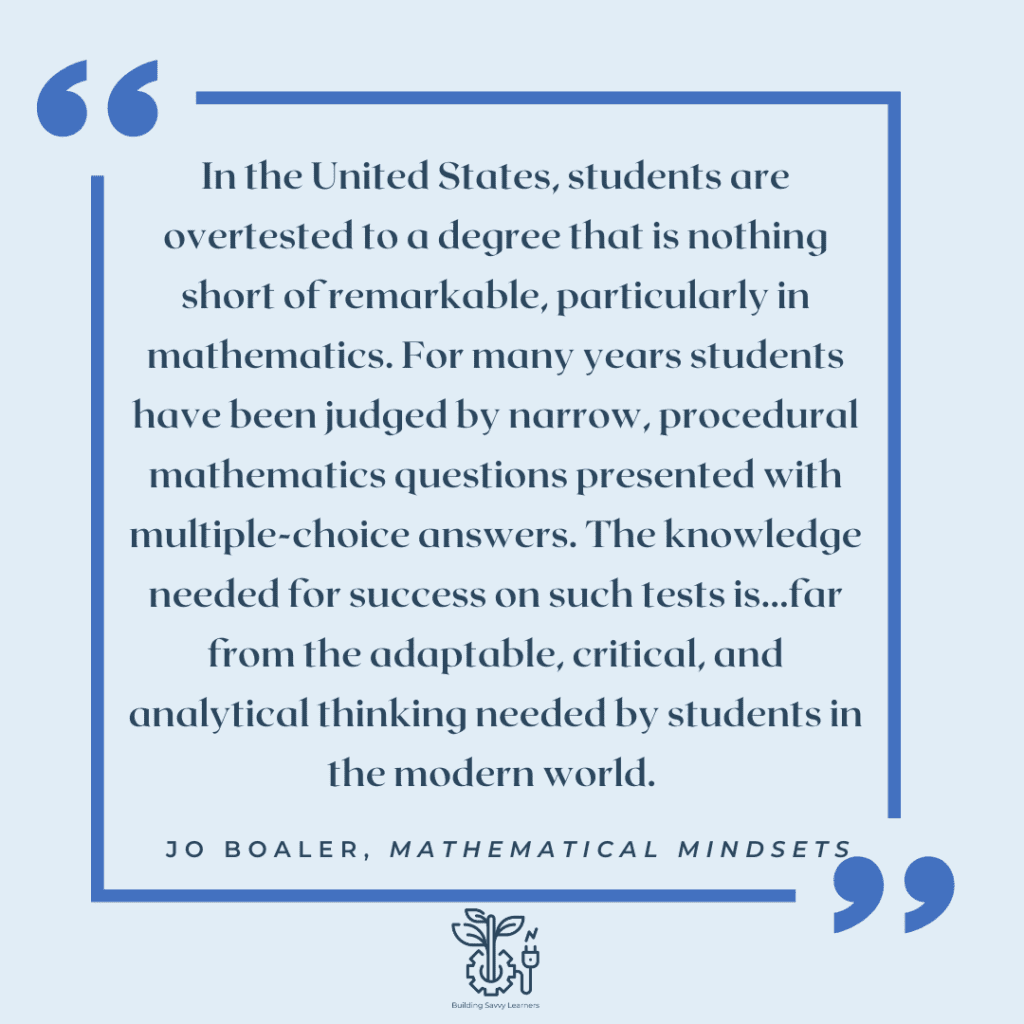
Resources for Teachers
The work we do in classrooms matters, too, whether that classroom is in a large public school or at a dining room table. The tasks we present and the values we emphasize reinforce kids’ understanding of what it means to do math. Here are some ways we can help with that.
1. Incorporate Low Floor – High Ceiling Tasks
A Low Floor, High Ceiling task is any task that’s designed to be easily accessible to all students and can accommodate a broad range of skills and approaches. Some of my favorite resources for these are shared below.
Youcubed
Youcubed is part of Jo Boaler’s research project at Stanford. There is a variety of tasks covering multiple skills and age ranges that have all been classroom-tested. Highly recommend this resource as a starting point. For the last few years, I started the school year with the Week of Inspirational Math tasks, and I noticed a big difference in kids’ attitudes toward math.
Mindset Mathematics Task Books
Mindset Mathematics Grade Level Task Books (Grades K-8) have been coming out over the last few years, and the set is nearly complete. Each book aligns specific tasks to grade level standards and concepts. The lessons include highly visual material and a conceptual development progression that could span several days of instruction. The links to each grade level task book are below.
NRICH Maths
NRICH Maths is a project out of the University of Cambridge, this site has curriculum-linked resources to develop mathematical reasoning and problems-solving skills. The tasks are organized by age-level bands and rated for their degree of challenge. They also have a collection of activities for students to engage with at home.
Math for Love
Math for Love is the creator of some of my all-time favorite math games such as Tiny Polka Dot and Prime Climb. Their website has a free lesson library with openers, games, and tasks. You can filter the lessons by topics, grade-levels, and Common Core alignment.
Open Middle
Open Middle problems are ones that have a single correct answer but support many approaches to getting to that solution. They’re challenging and encourage some deep math thinking. I used these problems a lot in my classroom, and I saw some great thinking and conversations as a result.
Steve Wyborney’s Blog
Steve Wyborney’s Blog has tons of free resources designed to encourage deep math thinking and conversation. I loved using the Splat! game and Esti-Mysteries in my math class as a warm-up—especially when we were virtual. If you haven’t ever visited this blog, I highly recommend it.
2. Build True Comprehension Over Speed
I fully understand the frustration of trying to teach multi-digit multiplication to kids who haven’t yet mastered their multiplication facts. I’ve been there when my district’s pacing guide said that had to come next and my teaching instincts screamed “we’re not ready yet!”
But the solution is not found in timed tests or memorization drills. Those tend to increase math anxiety without developing the understanding needed to perform better in higher level math experiences.
Instead, teachers need to spend more time developing number sense and give opportunities for more natural practice. Jo Boaler’s article Fluency Without Fear on the Youcubed blog goes into more depth on this research, but she recommends number talks and visual flash cards as two approaches to getting students to fluency.
Number Talks
I first read about this routine in Sherry Parrish’s book Number Talks: Whole Number Computation, Grades K-5. She describes problems and routines that foster a 5 to 15-minute classroom conversation centered on mental math computation. I loved doing these with my students because it highlighted the diversity of strategies that can be used to solve a problem. It also provided contexts for discussing what makes a particular strategy more or less efficient. If you haven’t read this book, I definitely recommend it. Just be prepared for a textbook-like price tag, unfortunately.
While I was still in the classroom, I made some mental math strategy posters to support Number Talks. They are the best selling item in my TeachersPayTeachers store.
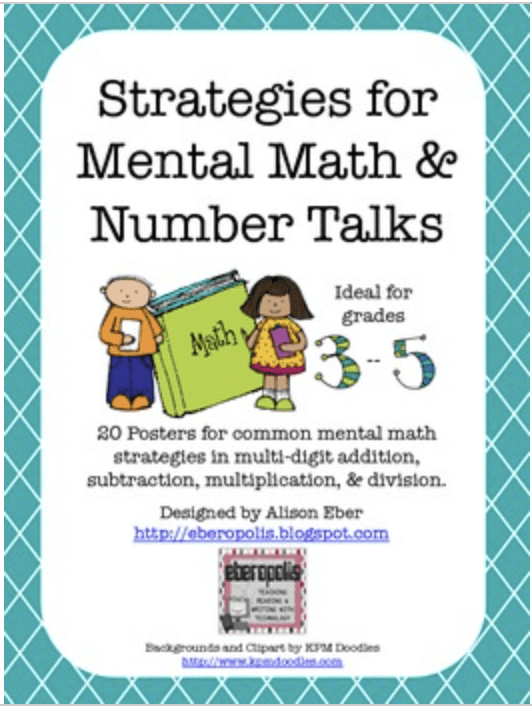
Visual Flash Cards
I recently fell in love with these visual flash cards by Math for Love. The Multiplication By Heart deck includes three different leveled decks and specific games and routines that help build fluency. The visuals help learners develop the concepts of multiplication without jumping into numbers alone, and it scaffolds learners through known to unknown facts.
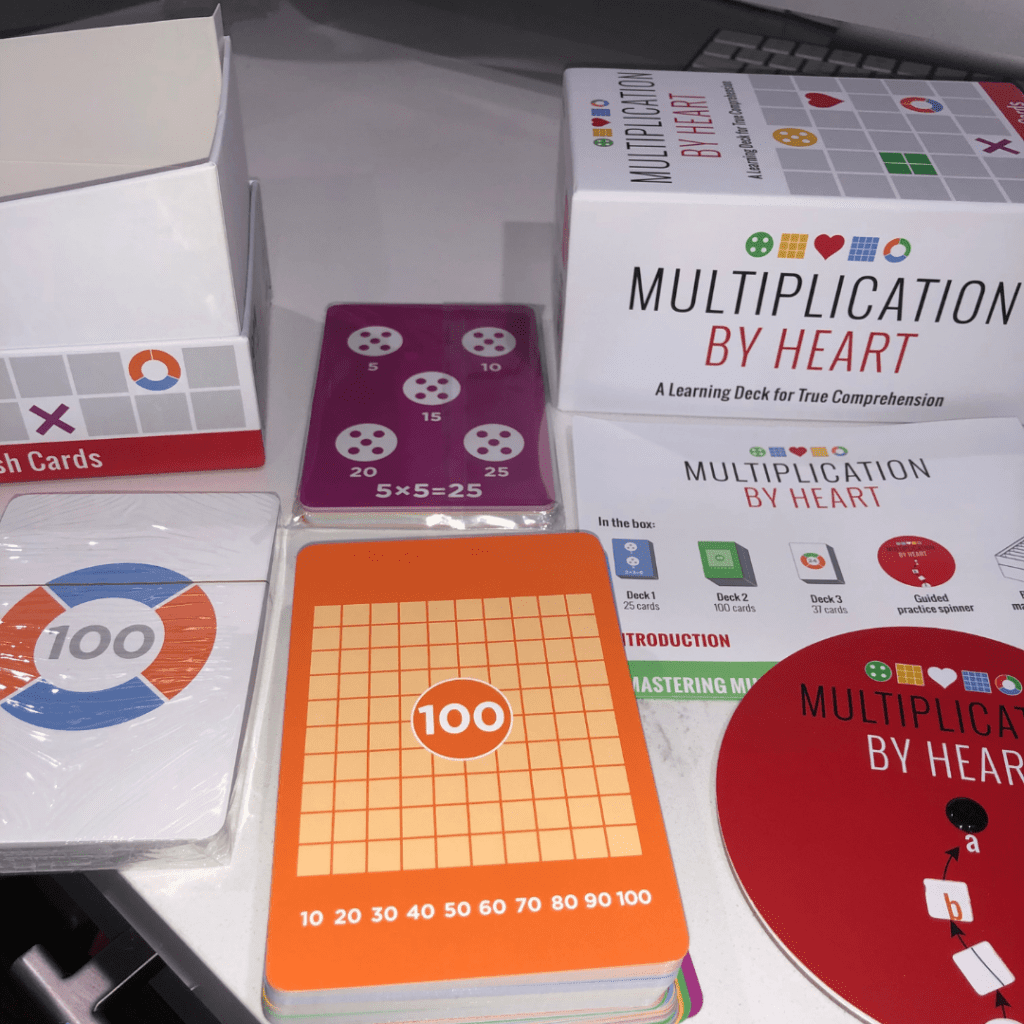
What are some ways your childhood experiences with math have affected you as an adult? I’d love to hear from you in the comments or connect on social media.
Read More
Boaler, J. (2016). Mathematical mindsets: Unleashing students’ potential through creative math, inspiring messages and innovative teaching. San Francisco, CA: Josey-Bass.
Boaler, J. (2019). Limitless mind: Learn, lead, and live without barriers. New York, NY: HarperCollins.
Dweck, C. S. (2006). Is math a gift? Beliefs that put females at risk. In W.W.S.J. Ceci (Ed.), Why aren’t there more women in science? Top researchers debate the evidence. Washington, DC: American Psychological Association.
Ennis, B.H. & Witeck, K. S. (2007). Introduction to representation: Grades 3-5. Portsmouth, NH: Heinemann.
Hoffer, W. W. (2012). Minds on mathematics: Using math workshop to develop deep understanding in grades 4-8. Portsmouth, NH: Heinemann.
Hyde, A. (2006). Comprehending math: Adapting reading strategies to teach mathematics, K-6. Portsmouth, NH: Heinemann.


